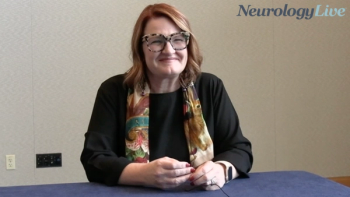
Bilateral Focused Ultrasound Thalamotomy Safe, Effective in Essential Tremor
Scores reflective of tremor in each body part and task performance improved by 71% in patients from baseline before first thalamotomy to 6 months after second thalamotomy.
Preliminary results presented at the 2020
In efforts to prove whether MRgFUS bilateral thalamic ablation can be tolerated, investigators assessed 5 patients who underwent a second thalamotomy on the contralateral hemisphere for non-treated tremor after receiving unilateral MRgFUS thalamotomy at least 1 year prior.
Led by Raul Martinez-Fernandez, MD, PhD, University Hospital HM Puerta del Sur, CEU‐San Pablo University, all patients had achieved tremor control in the treated hand and did not show any permanent adverse effects from the first thalamotomy. Investigators then observed the safety of the second lesion based on an evaluation of observed and/or reported treatment-related adverse effects.
No permanent adverse effects were registered. Additionally, bilateral MRgFUS thalamotomy resolved mild and transient gait instability within the first few weeks posttreatment in all 5 patients. Notably, 1 patient reported having dysgeusia for a few days following bilateral thalamic ablation.
Change from baseline before first thalamotomy, baseline before second thalamotomy, and 6 months after second thalamotomy were observed throughout the study. After second thalamotomy, no worsening on neuropsychological assessment nor voice and kinematic analysis was reported compared with baseline before second thalamotomy.
Benefit of the second treatment, assessed through the Clinical Rating Scale for Tremor (CRST), included examination of tremor in each body part, task performance, and independence for activities of daily living. Scores on CRST for examination of tremor in each body part and task performance improved by 71% in patients from baseline before first thalamotomy to 6 months after second thalamotomy (31.8 [±9.8] to 6.4 [±9.6]).
Martinez-Fernandez and colleagues noted that overall improvement in independence for activities of daily living increased by 87% (13.8 [±1.0] to 1.8 [±2.9]). Improvements from baseline before second thalamotomy to 6 months after second thalamotomy were 55% for examination of tremor in each body part and task performance, and 35% for independence for activities of daily living.
Investigators noted that further studies with a larger population are warranted to confirm this preliminary data.
Focused ultrasound has become a key therapy for patients with treatment-refractory ET. Findings from a study published in Neurology in November 2019 revealed that the benefits of focused ultrasound thalamotomy in patients with ET, including vast improvements in hand tremor, disability, postural tremor, and quality of life, were still realized 3 years after treatment.2
NeurologyLive spoke with Benjamin Walter, MD, medical director of the Deep Brain Stimulation Program at Cleveland Clinic, on the recent expansion of focused ultrasound and its capabilities to aid treatment in Parkinson disease. Watch the interview below.
For more coverage of MDS 2020,
REFERENCES
1. Martinez-Fernandez R, Pineda-Pardo J, Manez-Miro J, et al. Safety and efficacy of focused ultrasound staged bilateral thalamotomy for essential tremor. Presented at MDS Virtual Congress; September 12–16, 2020. Abstract 1479
2. Halpern CH, Santini V, Lipsman N, et al. Three-year follow-up of prospective trial of focused ultrasound thalamotomy for essential tremor. Neurology. 2019;93(1-10). doi: 10.1212/WNL.0000000000008561.
Newsletter
Keep your finger on the pulse of neurology—subscribe to NeurologyLive for expert interviews, new data, and breakthrough treatment updates.


































